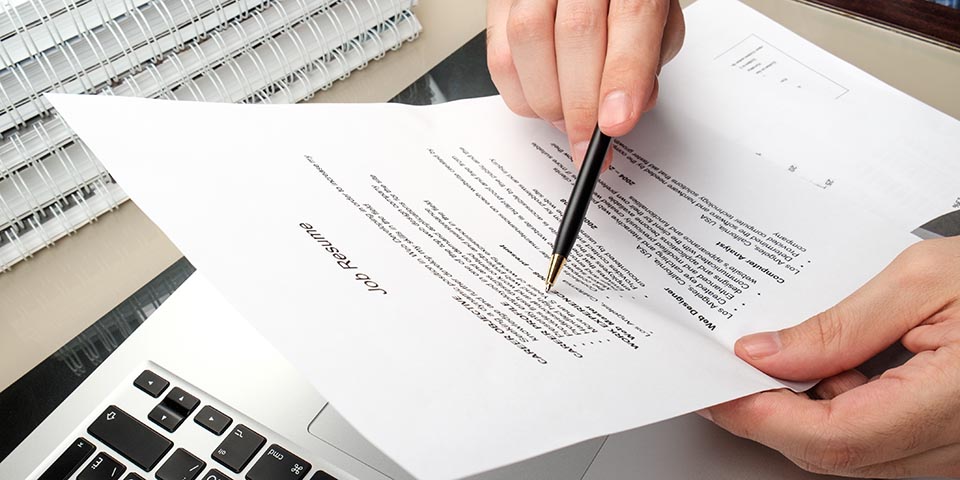Write a Curriculum Vitae: Do you have questions about how to write a Curriculum Vitae? However, when it comes to job hunting, your CV is essential. If you get it right, you’ll have an interview in no time; if you get it wrong, you’ll be rejected after rejection.

First, we must define what a curriculum vitae is. It is a personal marketing tool that you can use to sell yourself to potential employers.
It should tell them about you, your professional background, and your skills, and it should ultimately demonstrate why you are the best candidate for the job.
Full Guide on How to Write a Curriculum Vitae
Every CV is unique. You should also demonstrate why you are unique. You certainly can. However, they all follow a similar structure.
This guide will show you how to write an outstanding CV for 2021 using the accepted methods.
1. Make it Unique
Your CV should show your unique skill set and experience. It should also pique the employer’s interest. Consider using tinted paper, which has a slightly different cast than regular white paper.
Don’t forget about the font; keep it slick and readable, but don’t feel obligated to stick to the expected choices. To some extent, risk-taking can be advantageous.
2. Keep it Simple
The layout, like the font, is critical to a good CV. To ensure that the employer understands the full scope of what you can offer, they must read it.
Being ambiguous would be detrimental. Simple formats are best for this. Consider using templates to assist you.
3. Give it a Good Focus
Determine which industry you want to work in before tailoring your CV. To get the employer’s attention, make sure they see your relevant experience first.
Don’t be concerned if you lack relevant experience. Instead, emphasize how your skill applies to the job you’re applying for.
Don’t be afraid to apply for a teaching position if you’ve previously worked in a retail store. Your ability to think quickly and solve a problem.
In addition, an irate customer has given you a knack for initiative, which is useful for defusing classroom dramas.”
It is important to note that in today’s world, skills are becoming more important in the labor market. So, if you have skills, hone them.
4. Edit and Keep Editing

The first thing employers look for in a CV are grammatical errors and typos. No matter how qualified you are, they will turn an employer off if your CV appears rushed and ill-planned.
Employers, in fact, are quick to dismiss a resume with errors, regardless of experience, in favor of someone who has put effort and time into their work.
Check that all contact information, including addresses, phone numbers, and emails, is correct, and that there are no conflicting dates.
Take your time going over the process. This demonstrates your enthusiasm for the job.
5. Revamp It
Keep your CV up to date. Also, keep all of your experience up to date in order to meet the job requirements.
Take the time to go over old information as well. Change your contact information.
Can you imagine if you got the job but your phone number was outdated and inactive? I can imagine how you felt.
READ ALSO!!!
- What is a Federal Pell Grant?
- How to Write a Grant Proposal
- What Career I Want
- Short Certificate Programs
6. Length
Your CV should not be longer than two pages, on average. Employers must review a lot of resumes, so they don’t have the time or energy to read your novel-length application.
Ensure that the experience you list applies to the position. If you have a lot of expertise, going over two pages is OK. Being succinct and exact is key.
7. Achievements, Not Duties
Your resume should highlight your personal successes or accomplishments. Try to keep your resume from sounding like a job description.
Think on what you accomplished and the beneficial result. Your resume will sound more vibrant if you use “active” language rather than “passive” language. By doing this, you appear to be a doer rather than a passive participant.
FAQs on How to Write a Curriculum Vitae
1. How Far Back Should my Employment History Go?
Your CV should demonstrate your unique skill set and experience.
It should also pique the employer’s interest.
Consider using tinted paper, which has a slightly different cast than regular white paper.
Don’t forget about the font; keep it slick and readable, but don’t feel obligated to stick to the expected choices.
To some extent, risk-taking can be helpful.
2. Should I Include a Picture?
This is a topic that is becoming increasingly important in the recruitment world.
Some argue that with access to social media profiles, putting a picture on your CV makes little difference.
Others argue it could lead to discrimination.
It is ultimately your decision, but it is common practice not to include a picture.
3. Should I Use Bullet Points or Paragraphs?
Bullet points can help to divide and clarify the layout of your CV, especially in the Experience and Education sections.
They can also be used to draw attention to specific skills and key points.
Paragraphs are better for your personal profile, but if you’re feeling creative, you could try this format.
4. Is CV and Resume are Same?
A resume is a one page summary of your work experience and background relevant to the job you are applying to.
A CV is a longer academic diary that includes all your experience, certificates, and publications.
5. How do I Write a CV With No Job Experience?
If you have no experience, you can add job shadowing, volunteering, activities you did in high school or University/college or anything you feel could convince your employer to hire you.
Here, you can list all the skills you have, this is your time to shine, and show what you’re good at.
If this article, How to Write a Curriculum Vitae (CV) for any Job Opportunity has been helpful, kindly share with family and friends.



